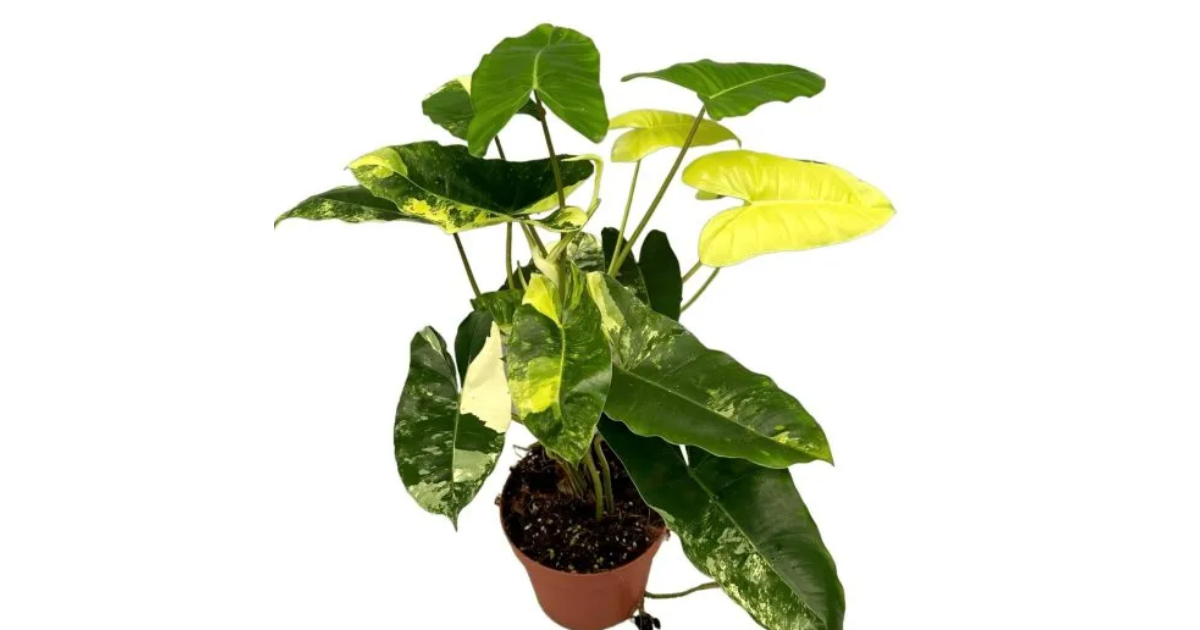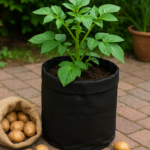Philodendron Burle Marx, a verdant masterpiece, captivates plant enthusiasts with its lush foliage and ease of care. Amidst the joy of nurturing this botanical gem, the emergence of yellow leaves can evoke concern. In this comprehensive guide, we unravel the mysteries behind Philodendron Burle Marx’s yellowing leaves, exploring its origins, ideal conditions, and the intricate dance between sunlight, water, and nutrients. Discover practical tips, troubleshooting insights, and real-life experiences from the plant community, as we embark on a journey to revive and cherish this botanical wonder.
Embrace the green adventure as we delve into the world of Philodendron Burle Marx with care and understanding.
Philodendron Burle Marx Overview

Philodendron Burle Marx hailed as a botanical marvel, is a captivating plant known for its striking appearance and adaptability. Originating from the vibrant rainforests of Brazil, this species is a member of the Araceae family. Its heart-shaped leaves, adorned with unique variegation, make it a sought-after choice among plant enthusiasts.
Thriving in warm, tropical climates, Philodendron Burle Marx displays resilience and versatility in various environments. This evergreen perennial’s manageable size and low-maintenance nature contribute to its popularity as an indoor ornamental plant. With proper care and understanding of its specific needs, cultivating a thriving Philodendron Burle Marx becomes an enriching journey for plant lovers.
Read for More details : Philodendron Burle Marx Fantasy: The Ultimate Care Guide
Why Philodendron Burle Marx Leaves Turn Yellow?

The phenomenon of Philodendron Burle Marx leaves turning yellow can be attributed to several factors, each requiring specific attention for effective resolution.
1. Natural Aging Process:
As the leaves age, it’s natural for them to turn yellow and eventually drop. This is part of the plant’s growth cycle and isn’t necessarily a cause for concern.
2. Lack of Sunlight:
Insufficient sunlight can impede the photosynthesis process, leading to yellowing leaves. Ensure your Philodendron Burle Marx receives the recommended amount of indirect light.
3. Overwatering and Underwatering:
Finding the right balance in watering is crucial. Overwatering can cause root rot, while underwatering can stress the plant, resulting in yellow leaves.
4. Nutrient Deficiencies:
Philodendron Burle Marx requires essential nutrients for vibrant foliage. A lack of nutrients, especially nitrogen, can manifest as yellowing. Regular fertilization is necessary.
5. Pests and Diseases:
Insects and diseases can compromise the plant’s health, leading to yellow leaves. Regular inspections and prompt intervention are necessary for prevention.
How to Identify the Yellow Leaves Problem?

Identifying issues causing yellowing leaves in Philodendron Burle Marx involves a systematic approach and keen observation. Here’s a step-by-step guide:
1. Visual Inspection Tips:
Examine the leaves closely. Look for patterns of yellowing, spots, or unusual markings. Identify whether the yellowing is uniform or specific to certain areas.
2. Monitoring Soil Moisture:
Check the soil regularly by inserting your finger about an inch deep. If the soil feels consistently soggy, it may be overwatering. If it’s scorched, underwatering could be the issue.
3. Recognizing Nutrient Deficiencies:
Yellowing in specific patterns, such as yellow edges or interveinal yellowing, can indicate nutrient deficiencies. Research common nutrient deficiency symptoms and compare them with your plant’s condition.
By combining these methods, you can pinpoint the potential causes of yellow leaves on your Philodendron Burle Marx. This targeted approach enables you to tailor your care routine and address the specific needs of your plant for optimal health and vibrancy.
Prevention and Maintenance
A. Providing Adequate Sunlight:
Ensure your Philodendron Burle Marx receives the right amount of indirect light. Please place it in a location with bright, filtered sunlight, protecting it from harsh, direct rays. Regularly assess the light conditions to maintain optimal growth.
B. Proper Watering Practices:
Establish a consistent watering routine, allowing the top inch of the soil to dry before watering again. Adjust the frequency based on environmental conditions, preventing both overwatering, which can lead to root rot, and underwatering, causing stress.
C. Fertilizing and Nutrient Supplementation:
Regularly feed your plant with a balanced, water-soluble fertilizer. Follow recommended dosage guidelines to prevent overfertilizing, ensuring your Philodendron Burle Marx receives essential nutrients for robust growth.
D. Pest and Disease Control Measures:
Implement preventive measures against pests and diseases. Use neem oil or insecticidal soap for pest control, and regularly inspect your plant for any signs of diseases. Promptly treat any issues to maintain overall plant health.
Troubleshooting Yellow Leaves

A. Addressing Specific Issues:
Identify the specific problem causing yellowing, be it nutrient deficiencies, pests, or other factors. Prune affected leaves and take targeted action, such as adjusting watering or providing additional nutrients, to address the underlying issue.
B. Adjusting Care Routines:
Based on your observations, tweak your care routine accordingly. If the soil is consistently wet, reduce watering frequency; if nutrient deficiencies are suspected, adjust fertilization. Philodendron Burle Marx is resilient, and minor adjustments can promote recovery.
C. Seeking Professional Advice if Needed:
If yellowing persists despite your efforts, seek advice from plant care professionals or experienced enthusiasts. Online communities and forums can provide valuable insights. Sometimes, a professional opinion can offer tailored solutions for your specific Philodendron Burle Marx concerns.
Tracking Plant Recovery for Philodendron Burle Marx
Ensuring the successful recovery of your Philodendron Burle Marx involves vigilant monitoring and thoughtful adjustments to your care routine. Here’s a guide on how to track and promote plant recovery:
1. Document Changes:
Keep a journal documenting any changes you make to the care routine, including adjustments in watering frequency, changes in light exposure, or alterations in fertilization. This helps track the plant’s response over time.
2. Regular Visual Inspections:
Conduct frequent visual inspections of your Philodendron Burle Marx. Look for new growth, changes in leaf color, and overall plant vitality. Positive signs, such as vibrant green leaves and budding shoots, indicate recovery.
3. Compare Progress Over Weeks:
Compare the plant’s condition over weeks rather than days. Plant recovery is a gradual process, and improvements may take time to be apparent. Patience is crucial in assessing the effectiveness of your interventions.
4. Monitor Soil Moisture:
Continue monitoring soil moisture levels to ensure consistency. Adjust watering based on the plant’s needs, considering environmental factors that might influence soil drying times.
5. Observe for Pest Reoccurrence:
Keep a lookout for any signs of pests returning. Even after treatment, pests can reappear, affecting the plant’s recovery. Promptly address any pest issues to maintain a healthy environment.
6. Assess Nutrient Levels:
If nutrient deficiencies were identified as a cause of yellowing, monitor the effects of fertilization. Watch for improved leaf color and overall plant vigor as indicators of nutrient uptake.
7. Seek Community Input:
Engage with plant communities and forums to share your progress and seek advice. Experienced enthusiasts may offer valuable insights or suggest additional steps to support your Philodendron Burle Marx’s recovery.
8. Adapt Care Routine as Needed:
Be adaptable in your approach. If specific interventions prove successful, maintain them; if not, be willing to adjust your care routine further based on ongoing observations.
Conclusion
In conclusion, yellow leaves on Philodendron Burle Marx may be disconcerting, but with the proper care and attention, your plant can thrive. By understanding the factors leading to yellowing and implementing adequate care practices, you can enjoy a lush and healthy Philodendron Burle Marx in your home.
FAQs
Why are my Philodendron Burle Marx leaves turning yellow?
- Yellowing can result from natural aging, inadequate sunlight, overwatering, nutrient deficiencies, or pests. Assess your care routine to identify the cause.
How often should I water my Philodendron Burle Marx?
- Water when the top inch of soil feels dry. Adjust the frequency based on environmental conditions to avoid overwatering or underwatering.
Are there natural remedies for pest control?
- Yes, neem oil and insecticidal soap are effective and plant-friendly options for controlling pests on Philodendron Burle Marx.
What are the best fertilizers for indoor plants?
- Opt for a balanced, water-soluble fertilizer with essential nutrients. Follow the recommended dosage to prevent overfertilizing.
Can yellow leaves be revived?
- Yellow leaves can recover with proper care depending on the cause. Prune affected leaves, address the underlying issue, and be patient.







